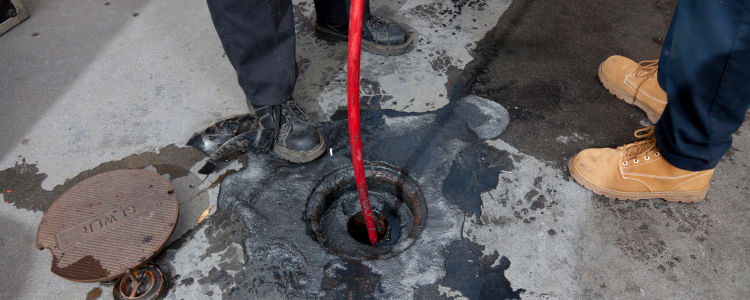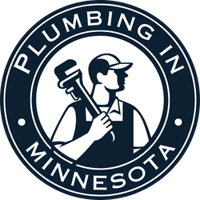8 Warning Signs of a Sewer Backup in Minnesota and How to Fix It
A sewer backup can be a stressful and costly ordeal, but recognizing the warning signs early can help you take quick action. If you live in Minnesota and notice any of these warning signs, contact a professional plumber immediately to prevent extensive damage.
2/20/20254 min read


A sewer backup is a homeowner’s nightmare, and in Minnesota, where extreme weather can take a toll on plumbing systems, the risk can be even greater. A sewer backup occurs when wastewater reverses its flow and comes back into your home through sinks, toilets, and drains. If left untreated, it can lead to costly damage, health hazards, and major disruptions. Recognizing the warning signs early can help prevent a full-blown disaster.
1. Slow Draining Sinks and Tubs
If you notice water taking longer than usual to drain in multiple fixtures, it could indicate a blockage in your main sewer line. While a single slow drain may just be a localized issue, multiple slow drains mean a bigger problem could be brewing.
2. Gurgling Sounds from Drains or Toilets
Unusual gurgling sounds coming from your pipes or toilet after flushing can signal trapped air caused by a clog in the sewer line. This is often one of the earliest indicators that a backup is on the horizon.
3. Water Backing Up in Unusual Places
A classic sign of a sewer backup is water appearing where it shouldn’t. If you flush the toilet and water comes up in the bathtub or sink, or running the washing machine causes water to overflow from a floor drain, you likely have a main line issue.
4. Unpleasant Sewage Odors
If you detect a foul sewage smell inside or around your home, it could mean wastewater is not properly flowing out. Sewer gas can pose health risks, so addressing the issue immediately is crucial.
5. Frequent Toilet Clogs
If you’re experiencing frequent toilet clogs despite no obvious cause, such as excessive paper use, there might be a deeper problem in your sewer line. Multiple clogs across different drains are a red flag.
6. Patches of Extra Green or Soggy Grass
In some cases, a sewer backup causes underground leaks that fertilize the soil, leading to unusually lush patches of grass in your yard. If you notice unexplained wet spots, it could mean a broken sewer pipe.
7. Mold Growth and Water Damage
Excess moisture from a sewer backup can lead to mold growth, particularly in basements and bathrooms. If you notice mold spots on walls or ceilings and there’s an accompanying musty odor, sewer issues could be to blame.
8. Rodent or Insect Infestation
Sewer backups can attract pests, including rodents and cockroaches, as they seek out water and food sources. If you suddenly notice an increase in pests, it might be time to inspect your sewer lines.
What to Do If Your Sewer Backs Up
If you experience a sewer backup, taking immediate action can minimize damage and health risks:
Stop Using Water – Cease using sinks, toilets, showers, and appliances that drain water to prevent further backup.
Turn Off Electricity in Affected Areas – If water has reached electrical outlets, turn off power to prevent electrocution.
Wear Protective Gear – Sewer water contains bacteria and contaminants. Wear gloves, rubber boots, and a mask if you need to be in the affected area.
Ventilate the Area – Open windows and doors to reduce foul odors and airborne contaminants.
Call a Professional Plumber – A licensed plumber can assess the damage and clear any blockages in your sewer line.
Contact Your Insurance Company – Depending on your homeowner’s insurance policy, sewer backups may be covered.
Sanitize the Area – Once the issue is resolved, thoroughly clean and disinfect all affected surfaces.
What Is the Most Common Cause of Sewer Backup?
The most common cause of sewer backups is clogs caused by grease, hair, paper products, and tree roots infiltrating pipes. In Minnesota, frozen sewer lines in winter can also contribute to backups, as expanding ice can obstruct wastewater flow. Old and deteriorating pipes are another common issue, especially in older homes with clay or cast-iron sewer lines.
Is It Safe to Stay in a House with a Sewer Backup?
A sewer backup poses serious health hazards, as it contains harmful bacteria, viruses, and mold that can lead to respiratory infections and other illnesses. If the affected area is large, raw sewage is present, or the odor is overwhelming, it’s best to evacuate until professionals clean and disinfect your home. If the backup is minor and confined to a single drain, you may be able to stay while repairs are made, as long as you take necessary precautions.
How Much Does the Average Sewer Backup Cost?
The cost of fixing a sewer backup depends on the severity of the damage. On average, homeowners in Minnesota can expect to pay:
Minor Clogs – $150 to $500 for professional drain cleaning.
Moderate Backups – $1,000 to $3,000 if repairs involve multiple drains.
Major Sewer Line Repairs – $3,000 to $10,000 or more if excavation and pipe replacement are required.
Having sewer backup insurance coverage can help mitigate costs, so check with your provider to see if your policy includes this protection.
Preventing Sewer Backups
While some sewer backups are unavoidable, you can take steps to reduce the risk:
Dispose of Grease Properly – Never pour grease down the drain; instead, dispose of it in a sealed container.
Use Drain Screens – Install screens to catch hair, soap scum, and debris.
Be Mindful of What You Flush – Only flush toilet paper and human waste; avoid flushing wipes, paper towels, or hygiene products.
Schedule Regular Sewer Inspections – A professional plumber can inspect and clean your sewer line annually to prevent clogs.
Install a Backwater Valve – This device prevents sewage from flowing back into your home during heavy rains.
Final Thoughts
A sewer backup can be a stressful and costly ordeal, but recognizing the warning signs early can help you take quick action. If you live in Minnesota and notice any of these warning signs, contact a professional plumber immediately to prevent extensive damage. By staying proactive with regular maintenance and proper waste disposal, you can minimize the risk of a sewer backup and keep your home safe and sanitary.
Plumbing in Minnesota
Providing exceptional plumbing solutions for homes and businesses across Minnesota, proudly serving key cities including Minneapolis, St. Paul, Bloomington, Duluth, Rochester, and Eden Prairie with unmatched expertise and reliability.
Contact
763-363-3388
Plumbing in Minnesota © 2025. All rights reserved.


Get a professional website and expert marketing with Handyman Digest, part of the Marketing Web Pro Network. Boost your online presence and grow your business today!
